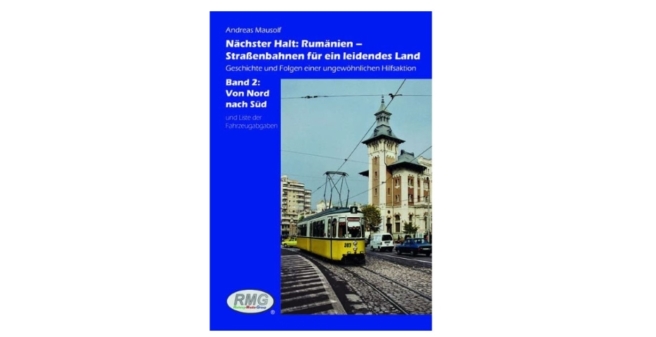
Two years ago, the first volume was published about the aid campaign launched by tram enthusiasts, in which vehicles that were no longer needed in Germany were sent to Romania free of charge to help the companies in need there. It described the companies in the west of the country, namely Arad, Timisoara, Oradea and Resita.
In this second volume, the author takes the reader on a journey from north to south to the numerous other farms in the country. After describing a number of journeys, this time largely by train, including to the east of the country and to the capital Bucharest, the cities that had trams in the 1990s are described “clockwise”. Not all of them survived, although apart from Sibiu, only those that were newly built in the 1980s were cancelled: Botosani, Brasov (Kronstadt), and Constanta. Cities such as Braila and Galati reduced their networks, in some cases drastically. However, they all benefited from the aid programme, even though even the vehicles from the Federal Republic of Germany and the former GDR, which were considered robust, failed due to the prevailing track conditions. In Resita, a new operation is nearing completion after deficiencies and a lack of political will to reorganise in 2011 meant the end of the first operation, which was also almost closed in the mid-1990s.
As in Volume 1, this is not just a look at local transport, but also at the towns and “country and people”, for which there is a special chapter entitled “Travel notes”. The country’s railway and one of the typical forest railways are also presented here.
The statistics section in Volume 2 is also particularly valuable, listing all the companies with material obtained from abroad. This is done chronologically for each company, although exact decommissioning dates are missing due to a lack of reliable sources. Nevertheless, there is an overview of the periods in which the acquisitions were or still are in use. Even 30 years after the start of the transfer operation, vehicles are still in use. Existing companies have also started to modernise their networks with the help of the EU and have also purchased low-floor vehicles. It is a pity that there are no route maps of the companies; they would make some things clearer.
The printing, layout and picture quality are once again very good, the picture descriptions are detailed and informative. Anyone interested in the subject will find it difficult to avoid these two volumes with their high documentary value.
Author: Andreas Mausolf
Editorial: Railway-Media-Group, Wien
182 pages, format 21.0 x 30.0 cm, hardcover
Prices: 45.00 €
ISBN: 978-3903411005
12.03.2024
